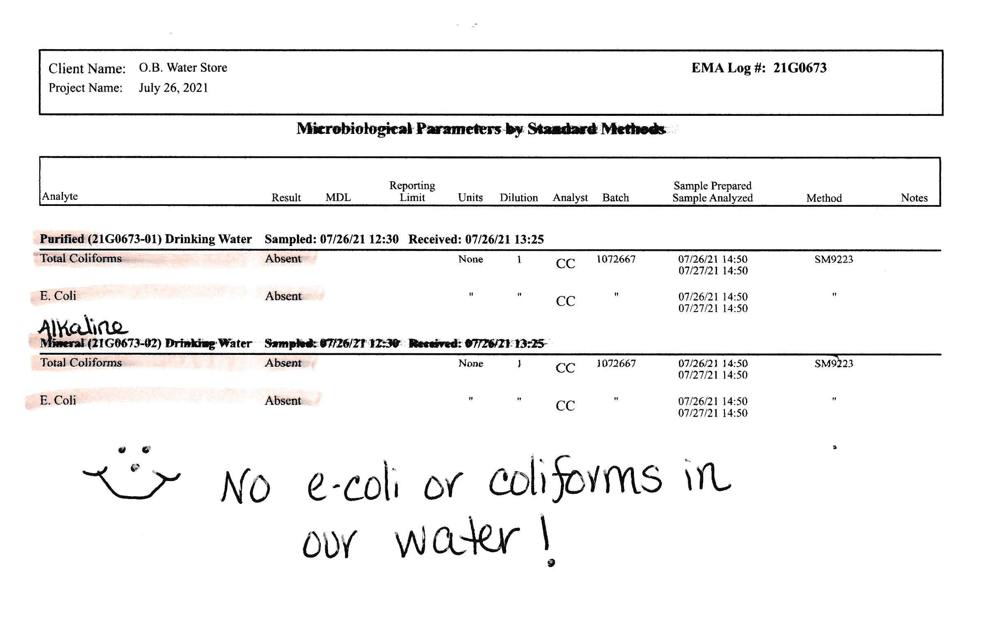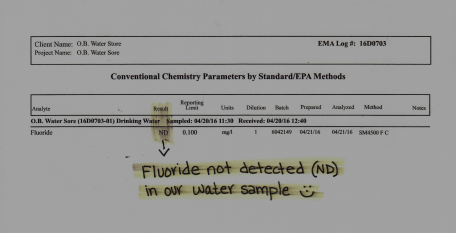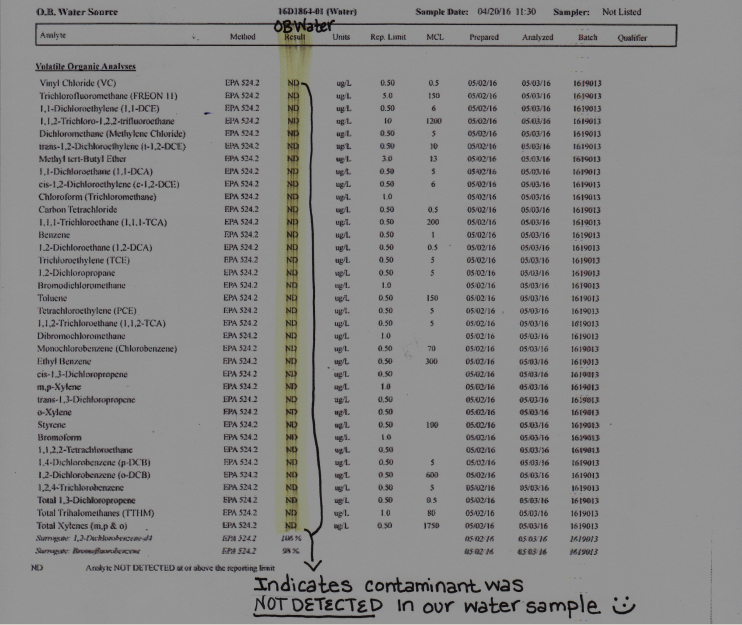Water Testing VOCs
Water testing VOCs is very important, we test our water quite frequently for 36 different volatile organic compounds (VOCs). Drinking water containing high levels of volatile organic compounds (VOCs) may be harmful to human health. VOCs are a class of chemicals that have important properties that they share.
They evaporate, or vaporize, readily (they are volatile), and they contain carbon (and are therefore called organic). When present in water at low concentrations, some VOCs produce a sweet, pleasant odor.
The U.S. Environmental Protection Agency (EPA) estimates that VOCs are present in one-fifth of the nation’s water supplies. They can enter ground water from a variety of sources. Benzene, for example, may enter ground water from gasoline or oil spills on the ground surface or from leaking underground fuel tanks.
Other examples of commonly detected VOCs are dichloromethane (methylene chloride), an industrial solvent; trichloroethylene, used in septic system cleaners; and tetrachloroethylene (perchloroethylene), used in the dry-cleaning industry.
Health Risks And VOCs
VOCs vary considerably in their toxic (or harmful) effects. Researchers have collected an extensive amount of information about the health effects of VOCs, from animals studies, and from studies of human exposures to large quantities of chemicals in the workplace.
Safe drinking water levels called health risk limits (HRLs) have been established by MDH for many VOCs. HRLs are levels of chemicals in drinking water that MDH considers to be safe for people to drink, including sensitive people such as the very young or the elderly.
VOCs at levels higher than the HRLs may be harmful to the central nervous system, the kidneys or the liver. VOCs may also cause irritation when they contact the skin, or may irritate mucous membranes if they are inhaled. Some VOCs are known or suspected carcinogens (or cancer-causers).
For VOCs that do not cause cancer, conservative methods are used to establish HRLs at levels considered safe, even if the water is used every day for drinking, cooking, bathing, and laundry.
For carcinogens, HRLs are established so that drinking water with levels above the HRL will cause no more than 1 additional cancer for every 100,000 persons exposed over a lifetime of use, a very small risk.
When more than one chemical is detected in a drinking water supply – even if levels are below the HRLs — additive effects should be considered when deciding whether a water supply is safe to drink. When compounds have similar effects, the HRLS for individual chemicals may not be sufficiently protective.
Water containing chemicals at levels lower than the HRLs is considered safe to drink. However, some individuals whose water has been found to contain chemical contaminants at low levels may make a personal choice to stop drinking their water or to investigate treatment options. We also test for E Coli as shown below.

Below is a copy of our test results testing our purified water for 36 VOCs, the results show ND meaning “None Detected” water testing VOCs is a key element of our business ti insure the water you drink is free from any chemicals.
We also test for Fluoride and E Coli and we have the test results below.




If you are concerned with the water you drink then come on by our store and give our water a try. We go to great lengths to insure you have the best and safest drinking water at an affordable price.
Other posts you should read.
